

Max Davies
2026 GWM Haval Jolion review
4 Hours Ago
The Ford Escape Vignale and Volkswagen Tiguan 162TSI R-Line are two semi-premium European SUVs with above-average performance and dynamics.

Senior Contributor
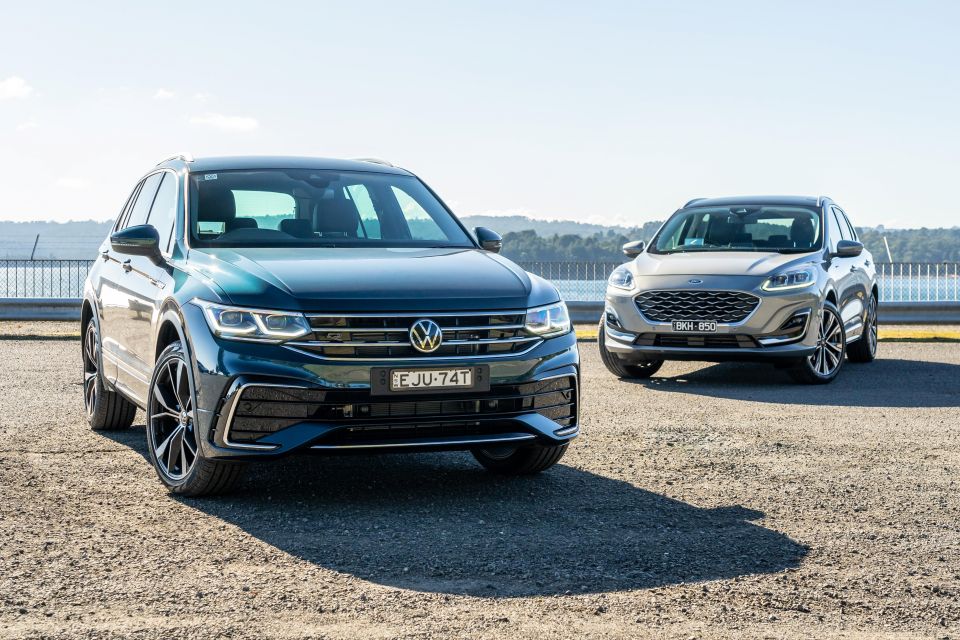

Senior Contributor
The Ford Escape and Volkswagen Tiguan are two mid-size SUVs with plenty in common.
Both have a dose of power, agile dynamics, and European origins. Both are also in short supply, but then again so are many competitor products.
Here we take a look at each in two highly specified forms to see which – if either – is worth considering.
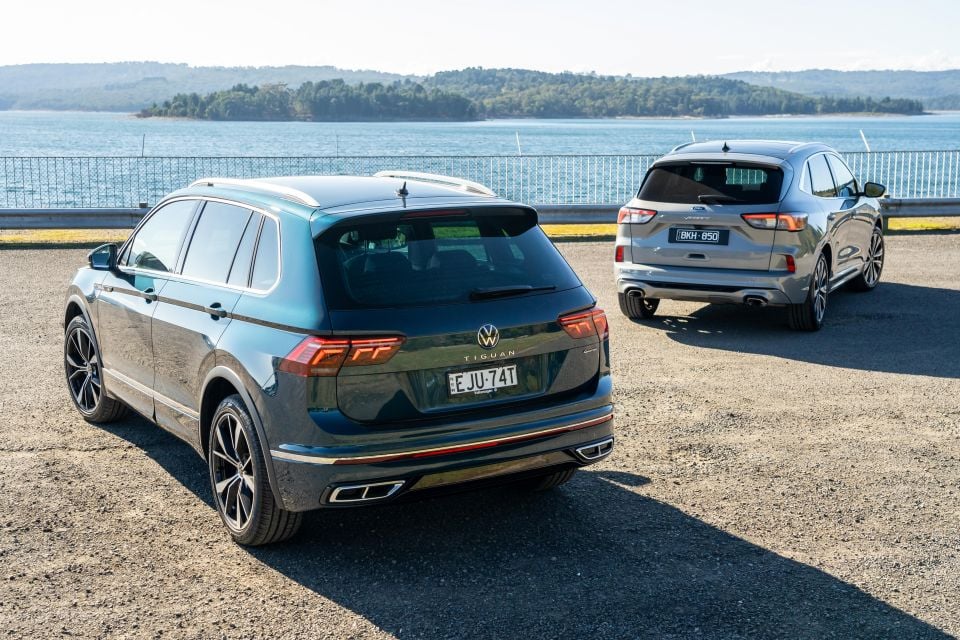
The Ford Escape Vignale costs $46,590 plus on-road costs with front-wheel drive (FWD), and $49,590 with all-wheel drive (AWD).
The Volkswagen Tiguan 162TSI R-Line costs $53,790 before on-road costs and is standard AWD.
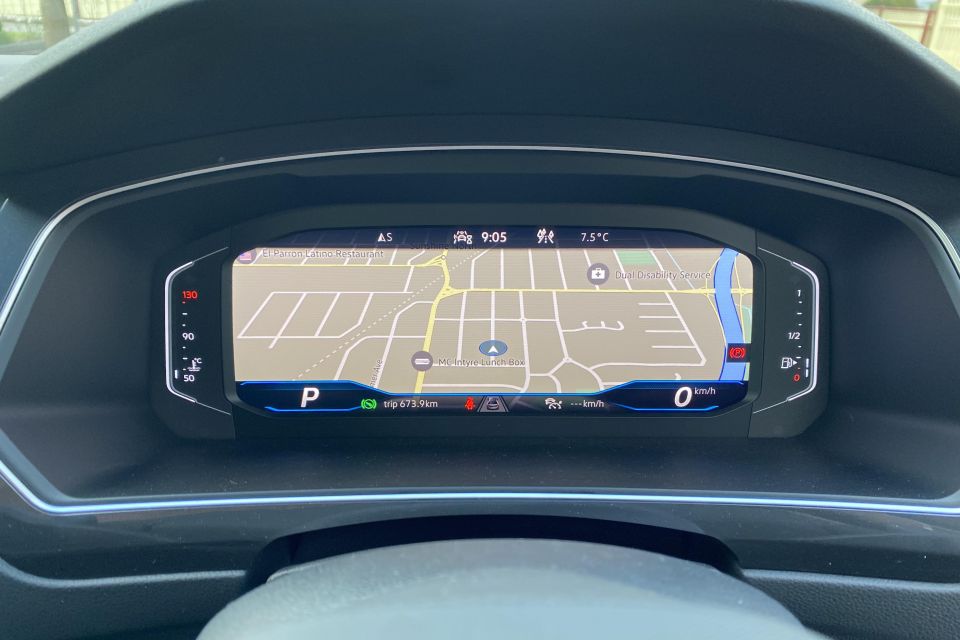


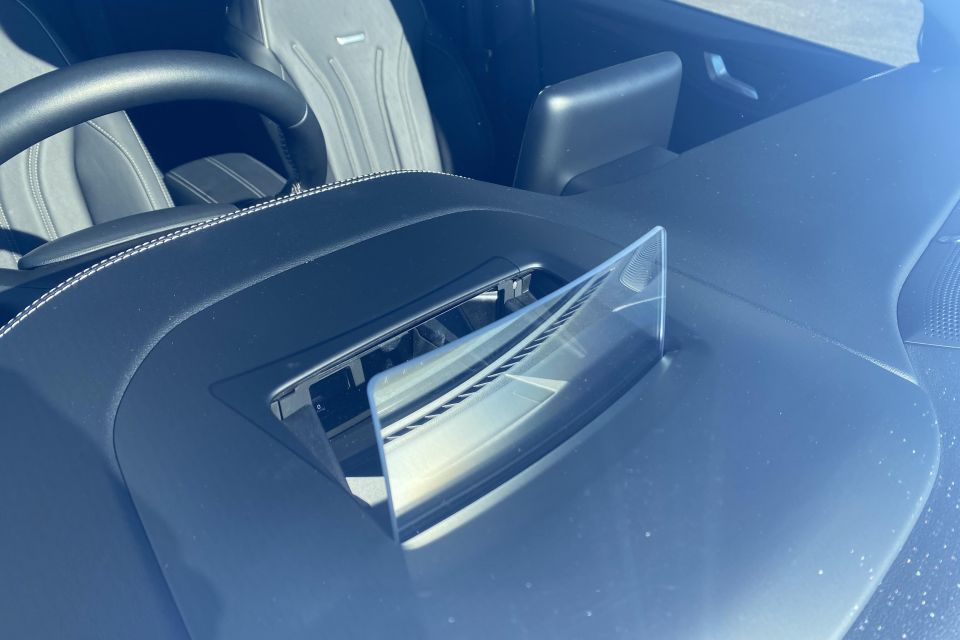
Standard features common to both include:
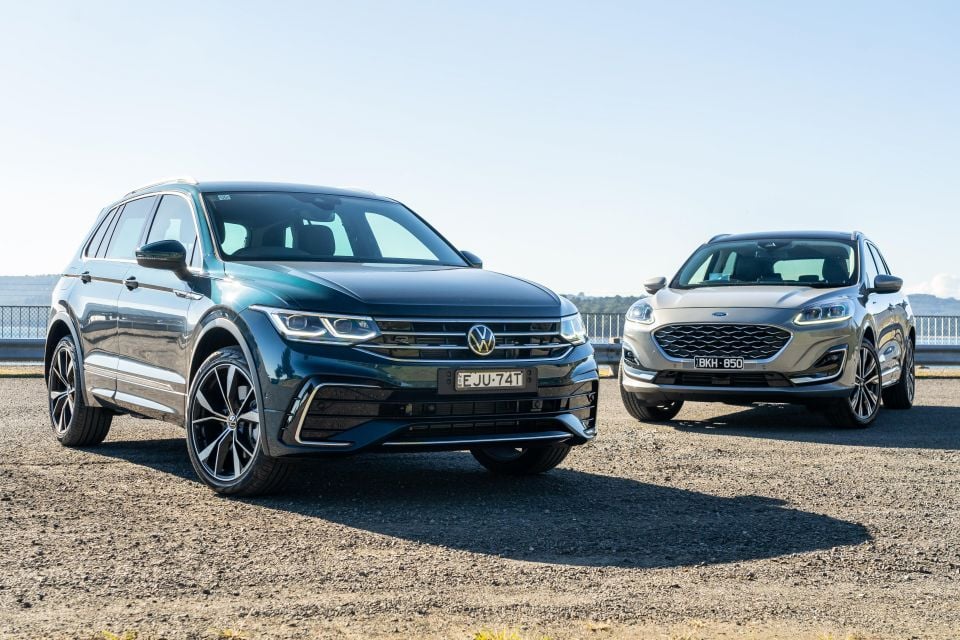
The Ford alone gets a standard sunroof, head-up display, digital radio receiver, wireless phone pad, programmable key, FordPass connected app embedded modem, and a better 10-speaker B&O sound system (eight in the VW).
The Volkswagen alone has standard 20-inch wheels (19-inch on the Ford), Vienna leather seats (Sensico fake leather in the Ford), three-zone climate control (two in the Ford), and wireless phone mirroring.
The Tiguan can be ordered with a $2500 ‘Sound and Vision’ package that adds a 360-degree camera, head-up display, and nine-speaker Harman Kardon sound system. You can also add a panoramic sunroof for a further $2000.
The Ford can be optioned with 20-inch wheels for $500.
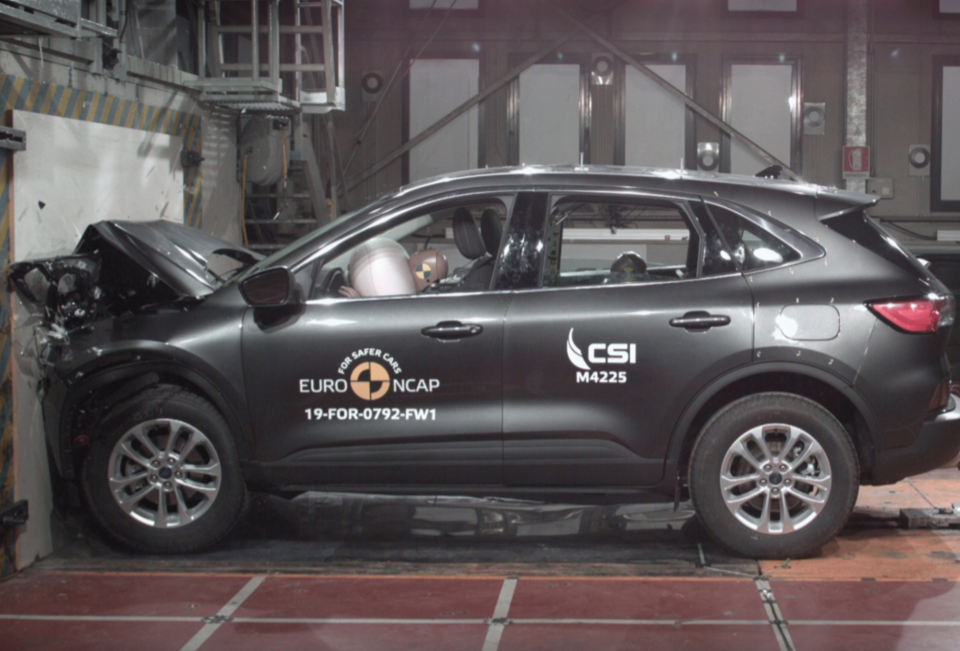
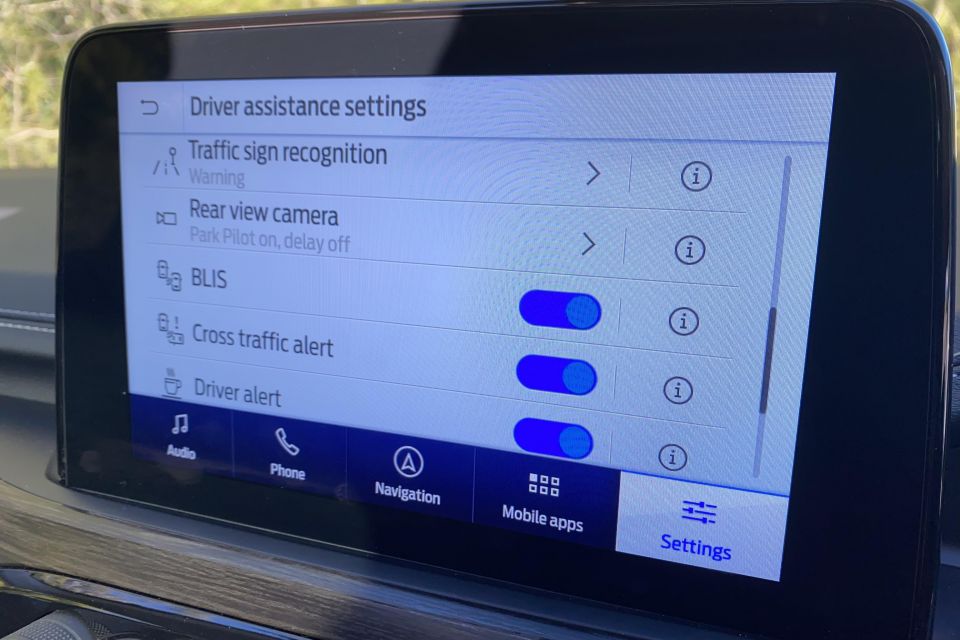
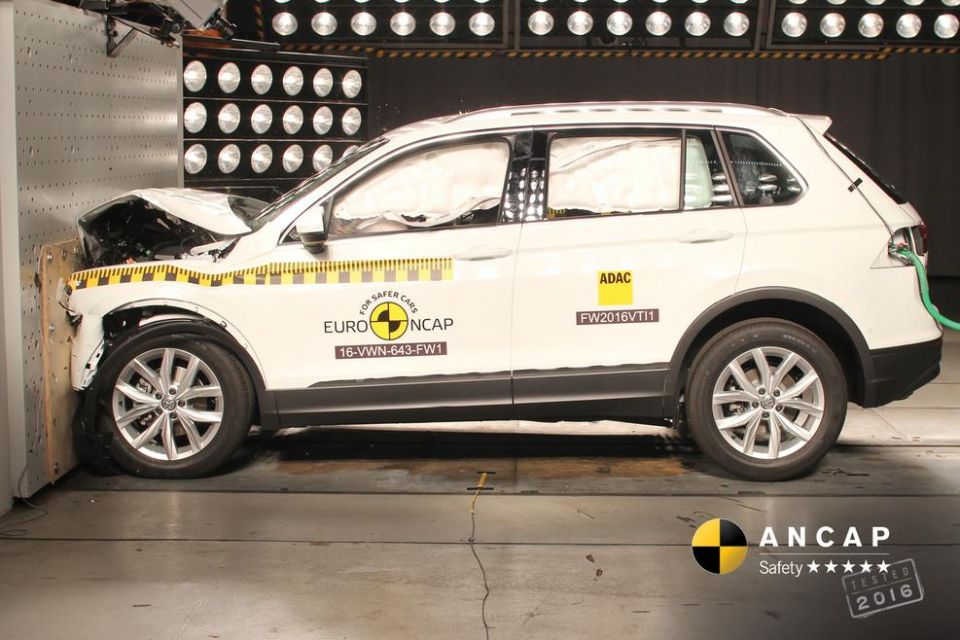
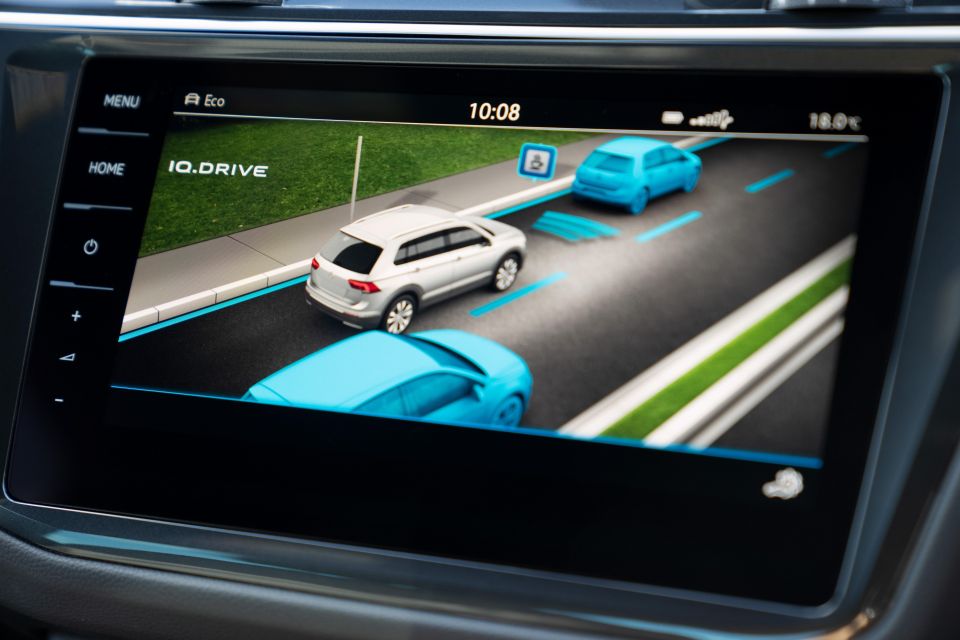
Both are well specified and have five-star ANCAP crashing ratings (date stamps of 2020 for the Ford, and 2016 for the Tiguan); dual front, front-side, and curtain airbags; and ISOFIX/top-tethers for child seats. VW adds a driver’s knee airbag.
In terms of active safety features both have:
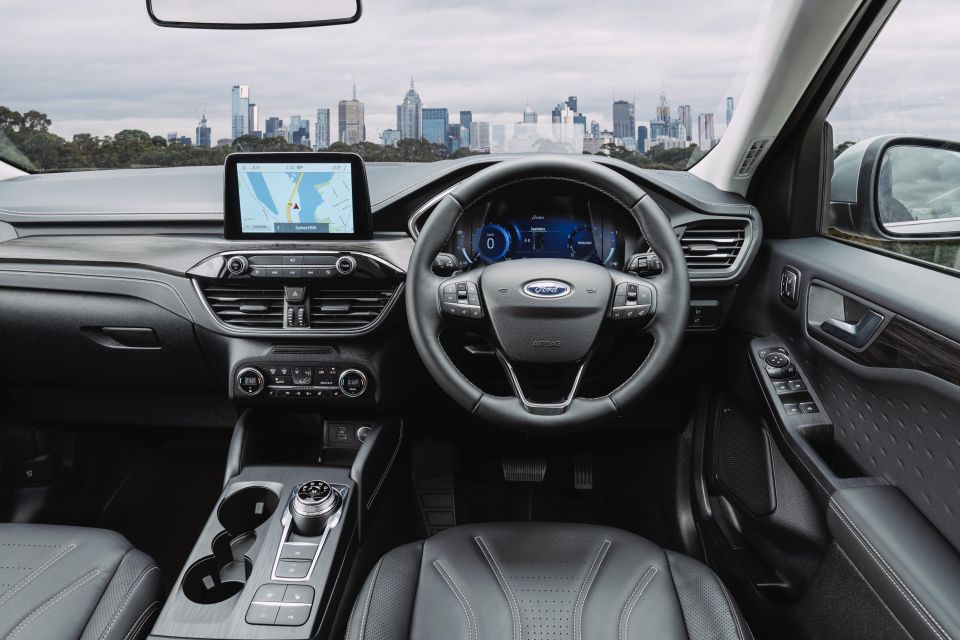
Ford
The driver is presented with a nicely stitched steering wheel with easy to understand buttons for audio, phone, and cruise control functions.
Unusually for a Ford, the company hasn’t relocated the indicator stalk over to the right-hand side of the column in our test car (though a running MY21.25 change implemented that while removing the heated steering wheel and rear seats), but the Tiguan is no different.
The instrument cluster is all digital and looks sharp, and also changes colours based on driving mode. However its processing speed could be sharper.
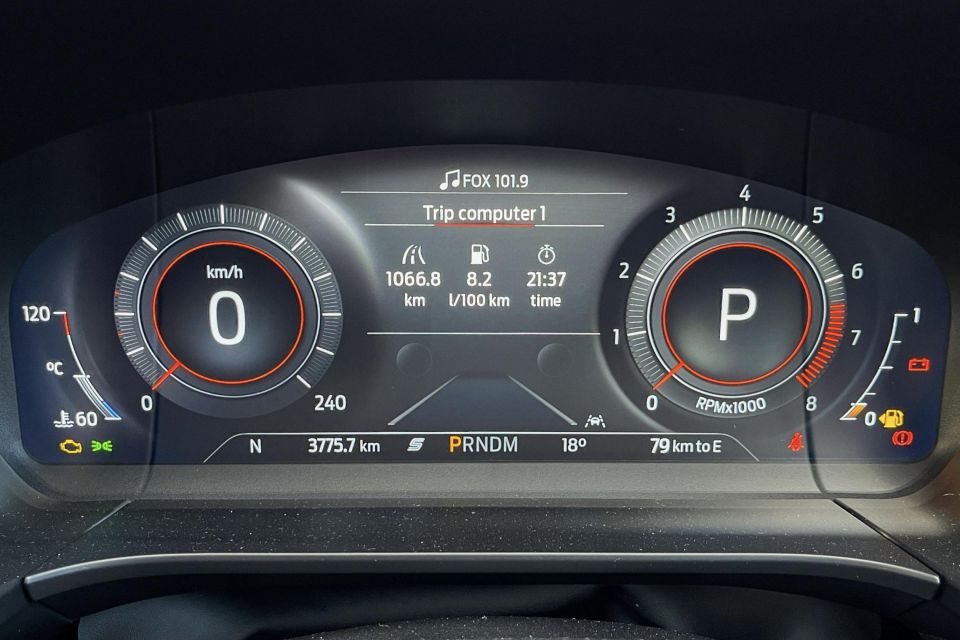

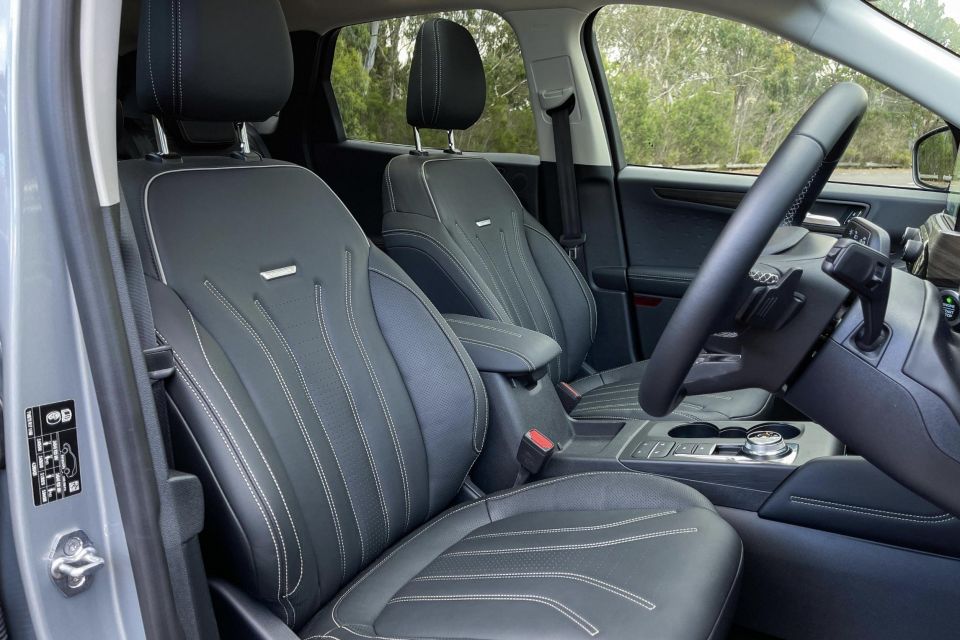
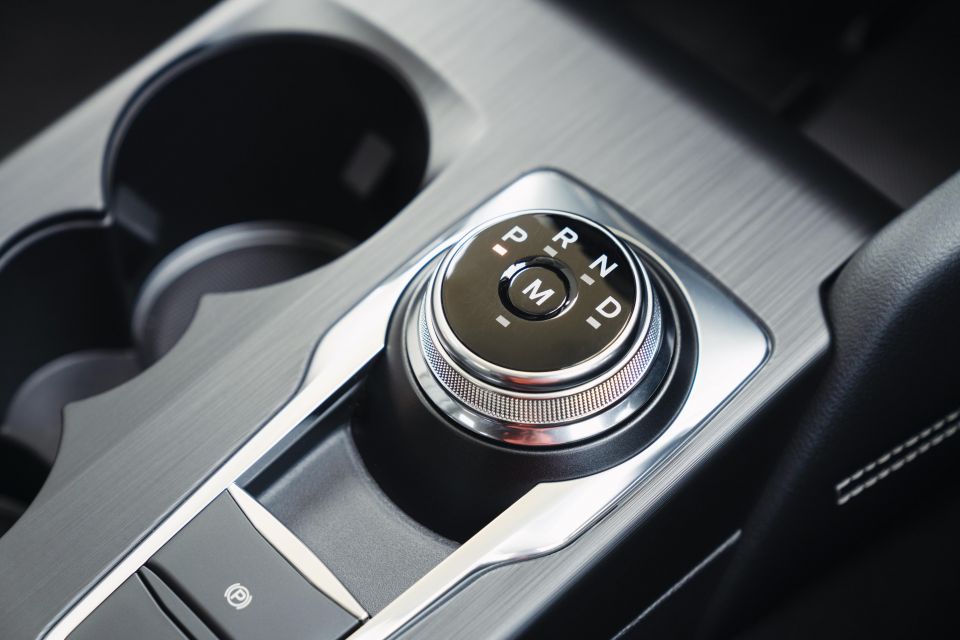
We welcome the fitment of a head-up display to show your speed, though the retracting glass piece is not as elegant as a windscreen projector.
The front seats are very nicely trimmed in hardy leather but they lack what I’d consider to be sufficient side bolstering and under-thigh support.
The centre stack comprises a high-mounted touchscreen running Ford’s intuitive Sync 3 system that uses simply tile shortcuts along a toolbar, offers good voice control, fast-loading navigation, and a crisp camera.
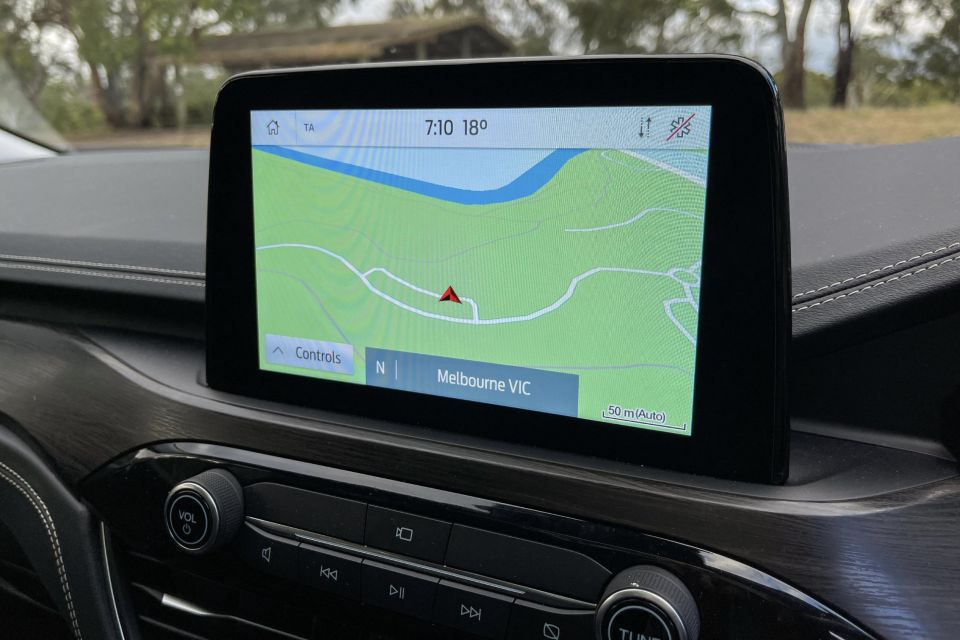
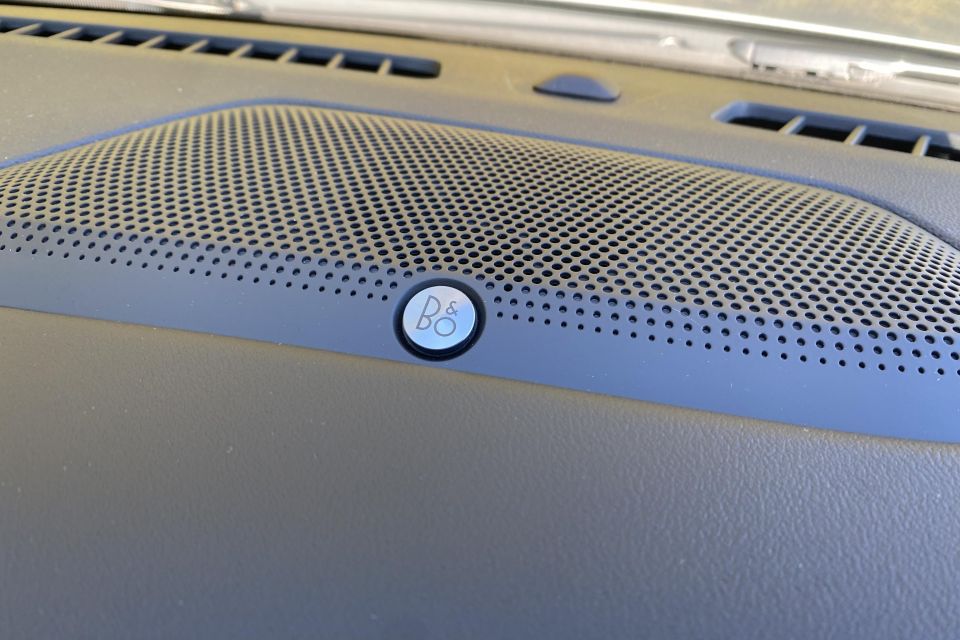
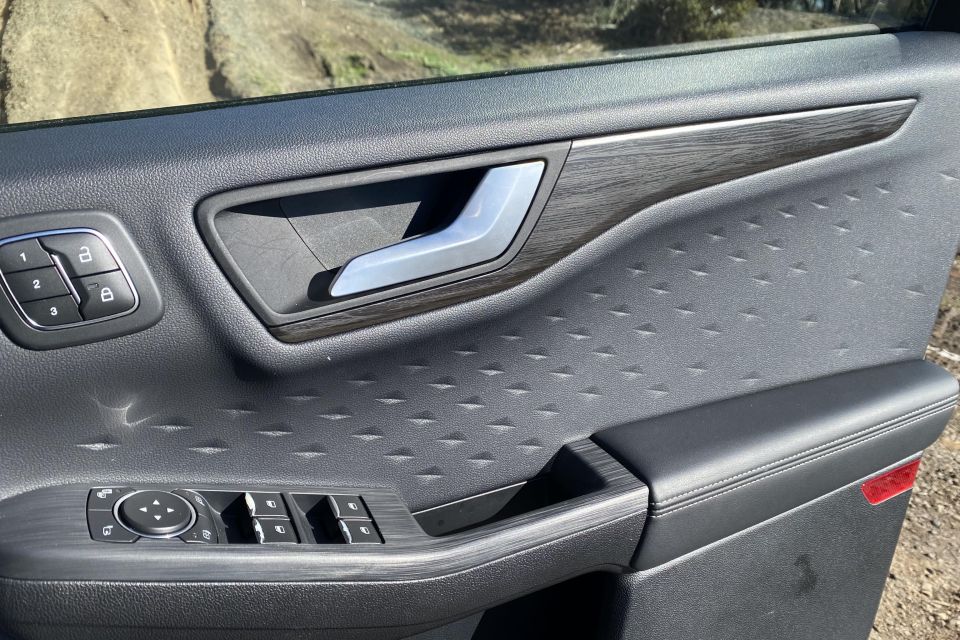
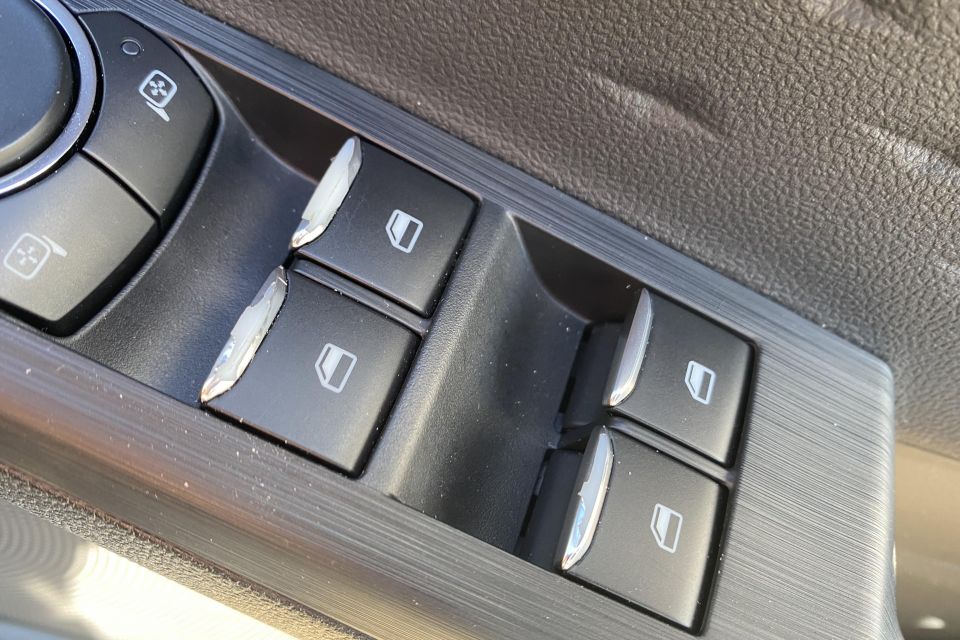
Below this are the user-friendly buttons and dials to control the climate control, an open cubby with USB-C and USB-A points flanked by soft knee pads, and a transmission tunnel with a rotary dial gear shifter and electric park brake.
It’s not the final word in luxury, though the Vignale does bring some contrast stitching and trims, and there’s a welcome lack of piano black. The blue-lit cupholders are a clever touch, and the door cards are easily cleaned.
The fit and finish felt mostly ok and the solidity ditto, although I did notice peeling plastic on the door window switches that was disappointing to find on such a new vehicle. This is pictured in the gallery above.
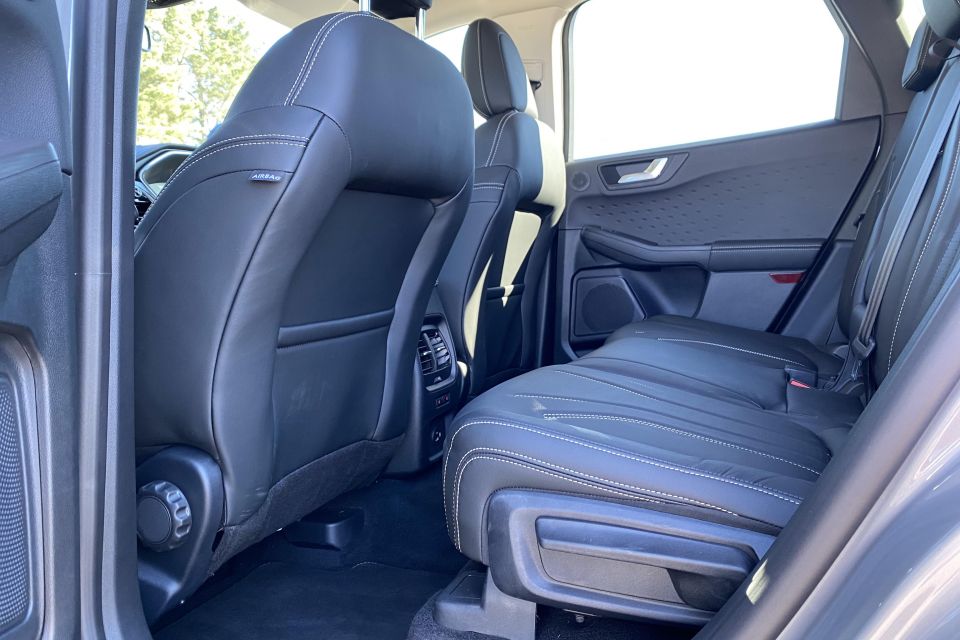
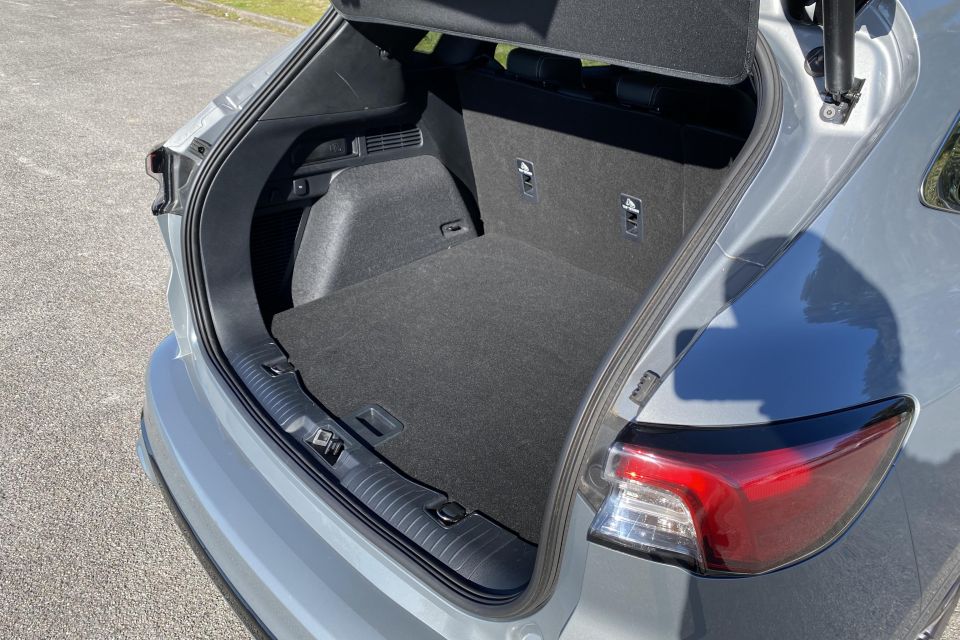
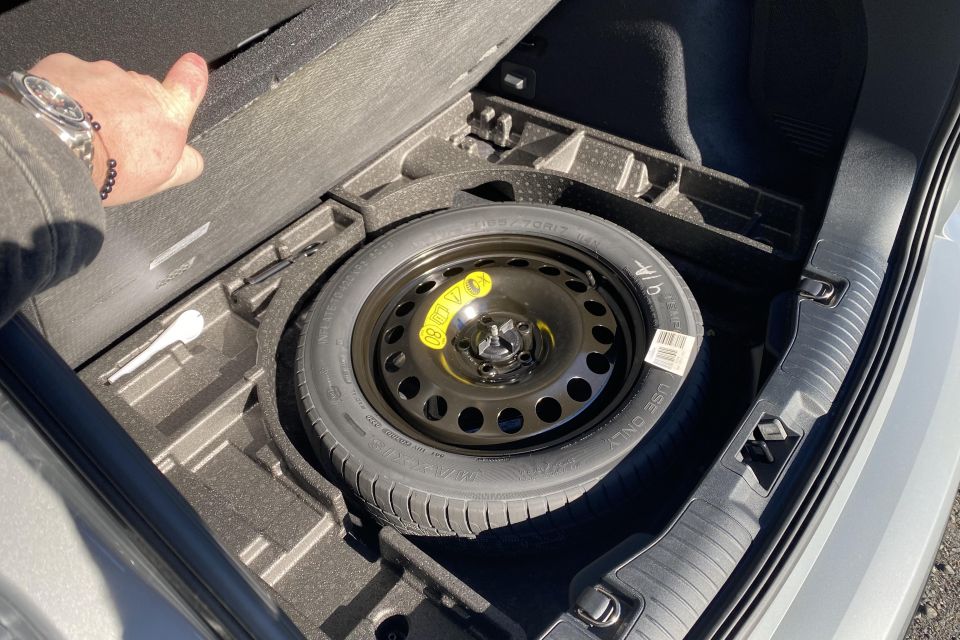
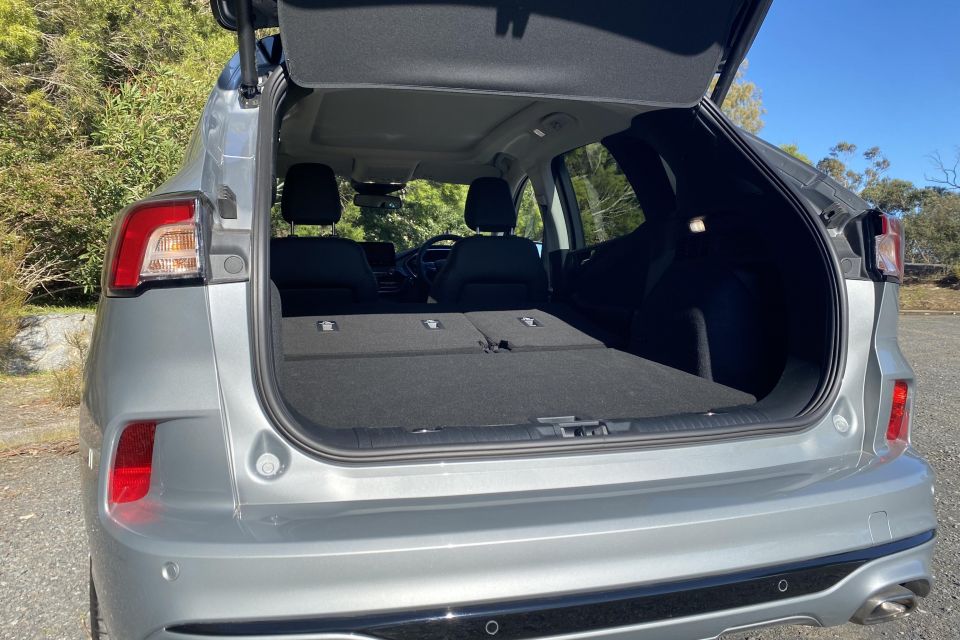
The sliding and tilting back seats offer room for a pair of adults on the heated outboard bases (removed for MY21.25), or three kids across, and even with the sunroof I never suffered from lack of headroom.
Rear occupants get vents and USB-C/USB-A points, plus a cupholder-armrest.
Boot capacity is a generous 557 litres with five seats in use and levers are mounted in the rear that tumble the middle seat-backs downwards. There is also a 12V socket, a space-saver spare tyre, and a lightweight cargo cover.
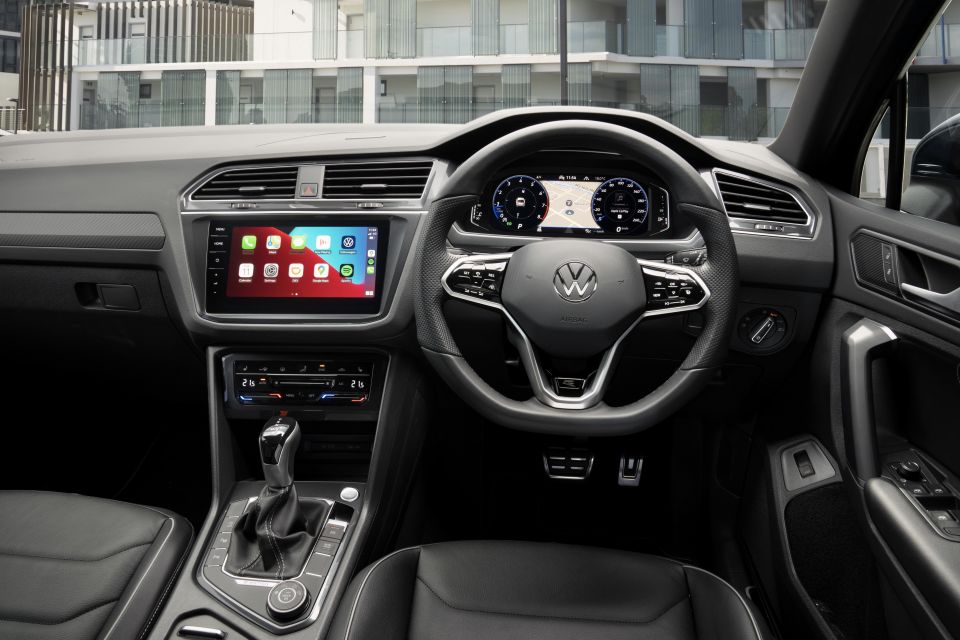
Volkswagen
The Tiguan’s interior makes a better first impression than the Ford, with its solid door ‘thunk’, premium materials, and extra feeling of solidity. Plus a Volkswagen wouldn’t be a Volkswagen without cloth-lined door bins…
The perforated leather steering wheel feels more expensive than the Ford’s, and the digital instruments look a little slicker and have the added bonus of showing full-size maps.
The 9.2-inch centre touchscreen is mounted flush in the dash and offers more smartphone-like swiping than the Ford’s, and slicker graphics. It also offers wireless phone mirroring.
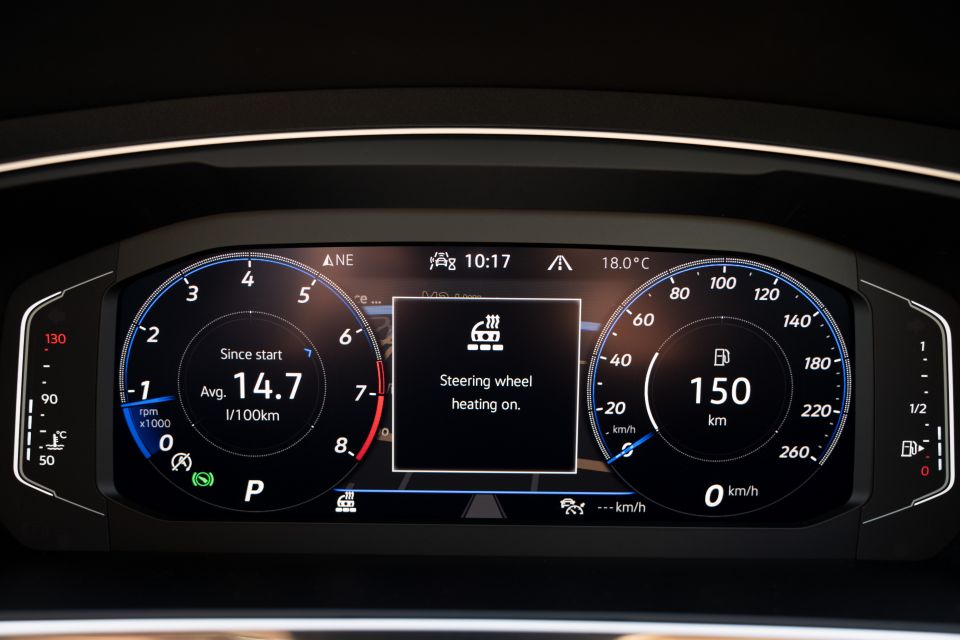
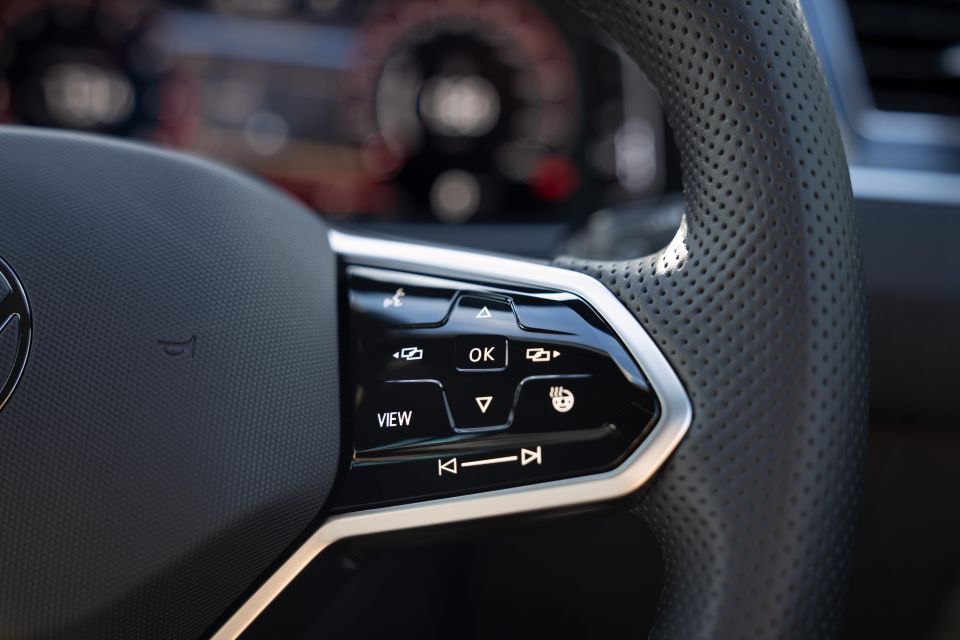

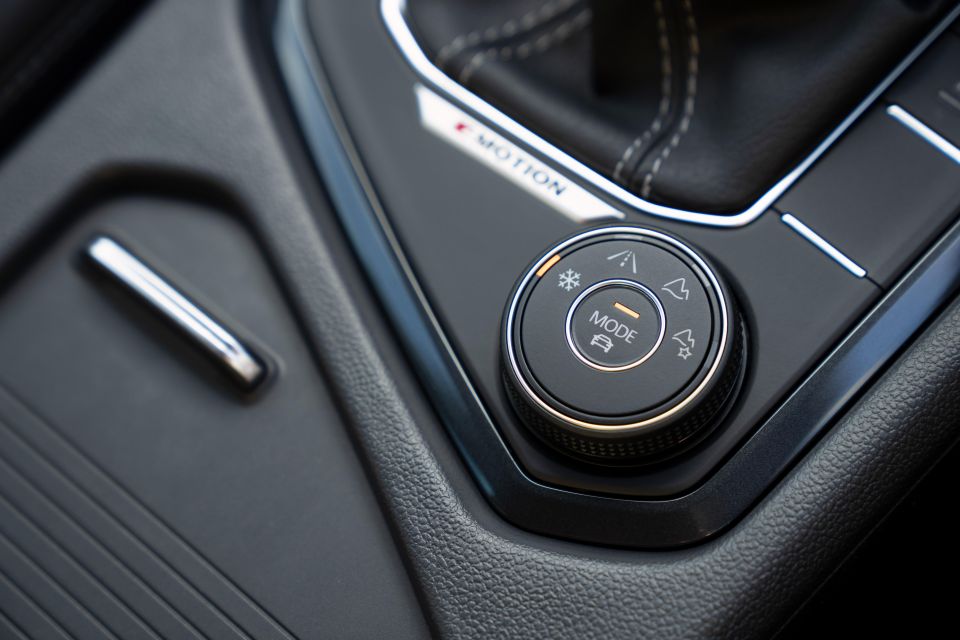
Not all aspects of the Tiguan updates are improvements though, because the Ford’s plainer cabin offers easier interfacing. The uber-sensitive touch pads on the VW wheel, and lack of buttons and knobs for infotainment grated on me a bit.
Worse are the touch-sensitive piano black ventilation controls, which just aren’t as ergonomic when on the move as the MY20 model.
The front seats offer a little more under-thigh support through corners than the Ford’s do.
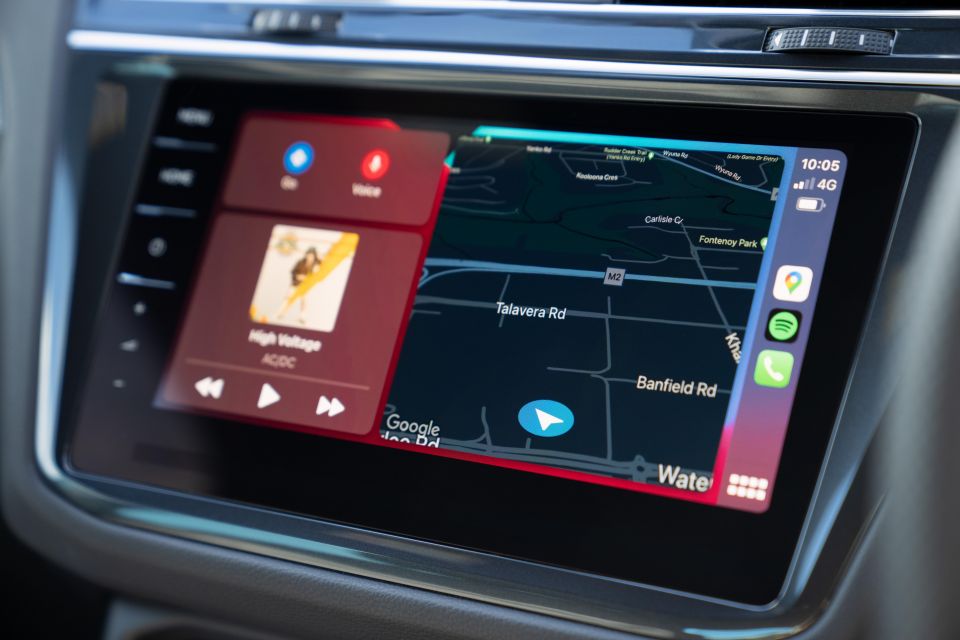
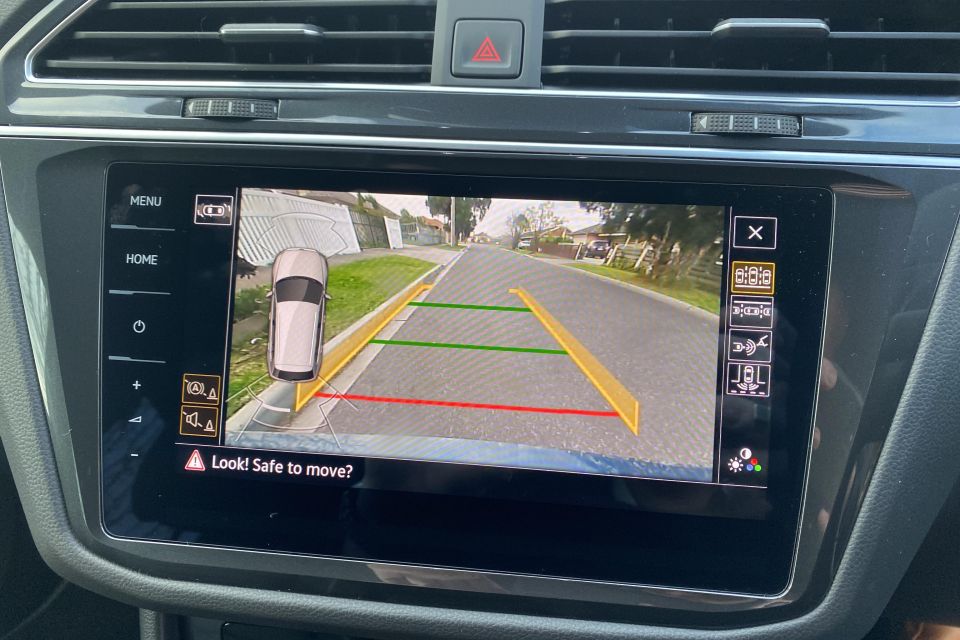
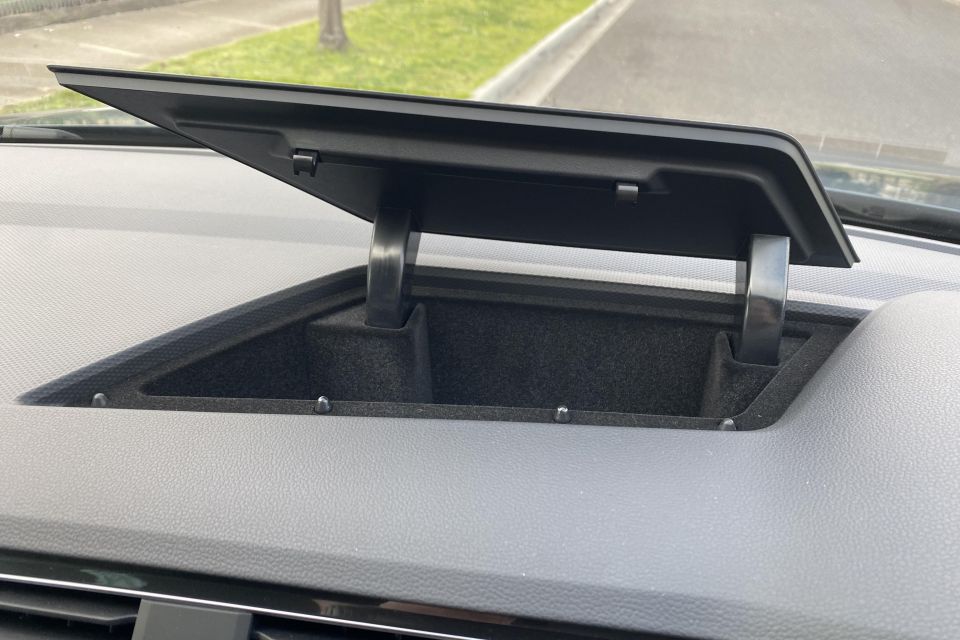

While our test car lacked a sunroof, the rubber-bottom flip-down cubbies in the roof are a nice alternative, ditto the soft-closing tub atop the dash. I also dig the sliding top on the centre cupholder section.
Running along the centre section is a more conventional gear shifter and a weighty rotary dial to adjust your driving and traction modes.
While an unorthodox test, the transmission tunnel is bolted down so well that you can’t move it a millimetre. It exudes quality.
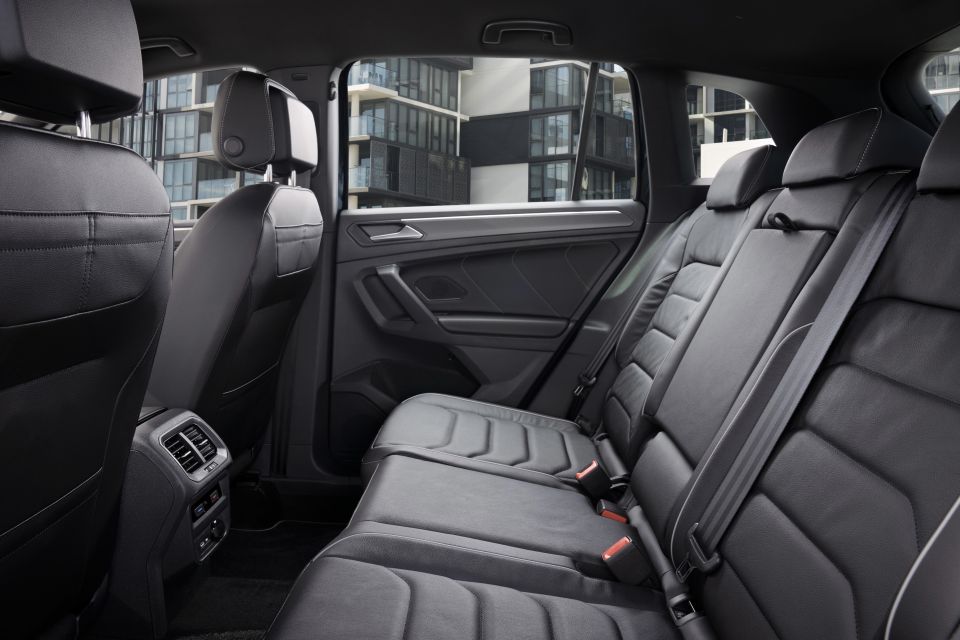
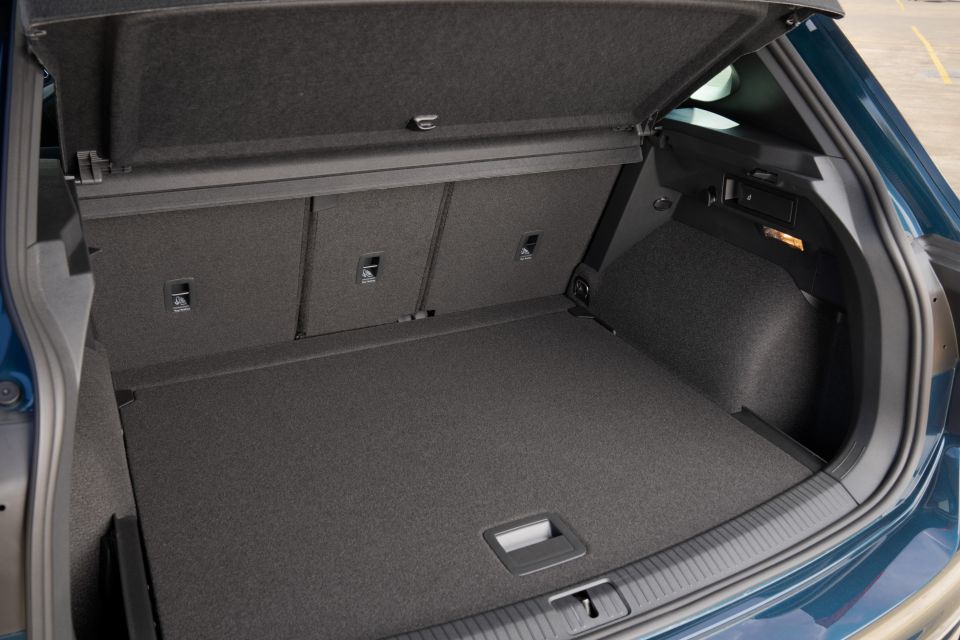
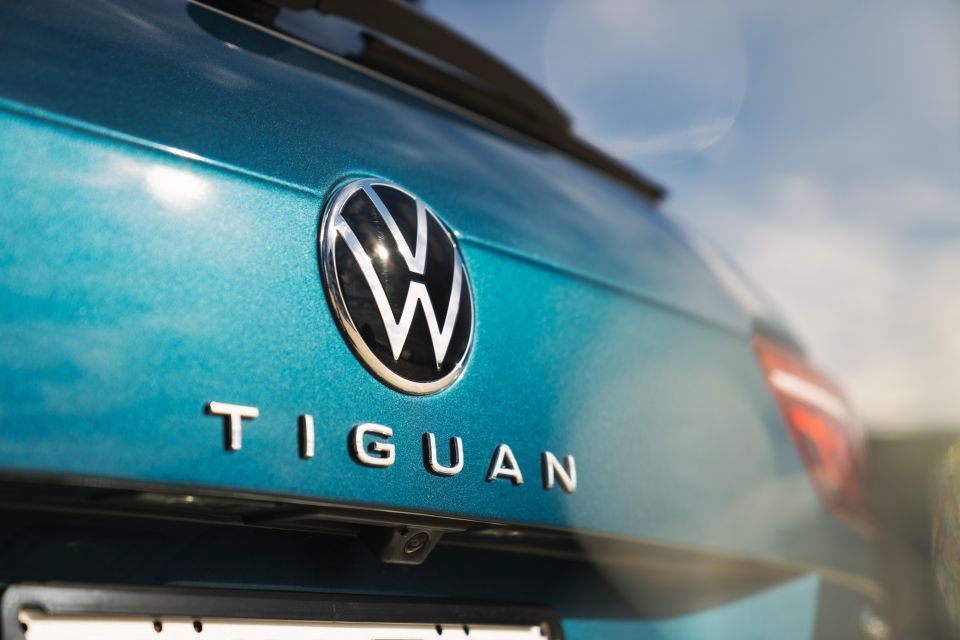
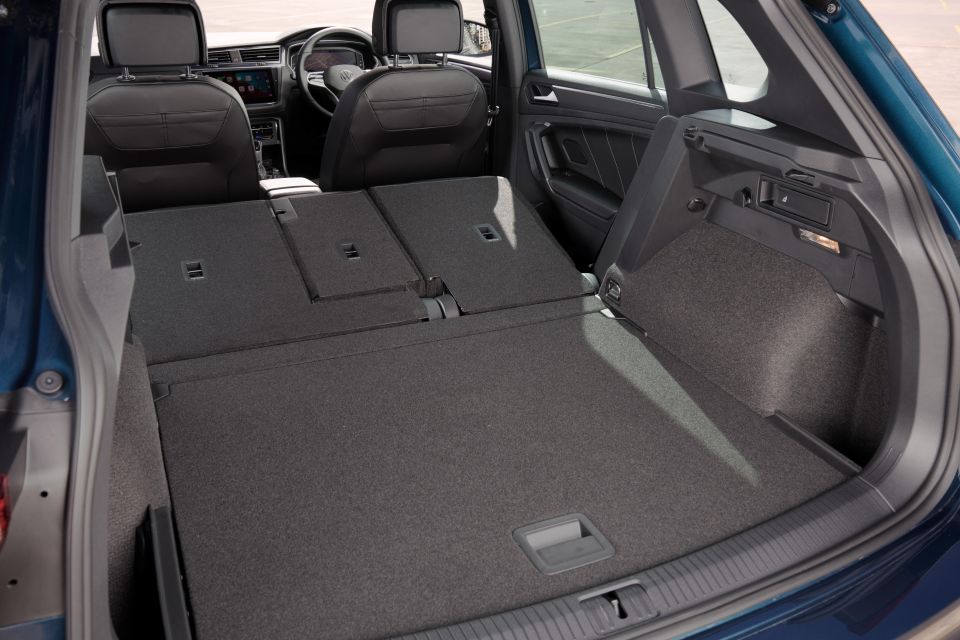
The tilting and sliding back seats are every bit as spacious as the Ford’s, and the side windows are large and let in plenty of light. Like the Escape there are rear vents and a USB-C point, and you also get temperature controls and a 12V socket.
While the Ford’s rear seat-backs fold on a 60:40 basis, the Tiguan’s middle section flips down, meaning it can fold 40:20:40.
You also get levers to flip them down mounted in the (bigger) boot, plus clever touches such as a two-level floor (with temporary spare below) and a more solid cargo cover.
| Ford Escape Vignale | VW Tiguan R-Line | |
|---|---|---|
| Length | 4629mm | 4509mm |
| Width | 1883mm | 1839mm |
| Height min | 1680mm | 1645mm |
| Wheelbase | 2710mm | 2681mm |
| Boot (5 seats up) | 557L | 615L |
| Boot (2 seats up) | 1478L | 1655L |
| Boot length max | 1739mm | 1746mm |
| Boot width min | 1030mm | 1000mm |
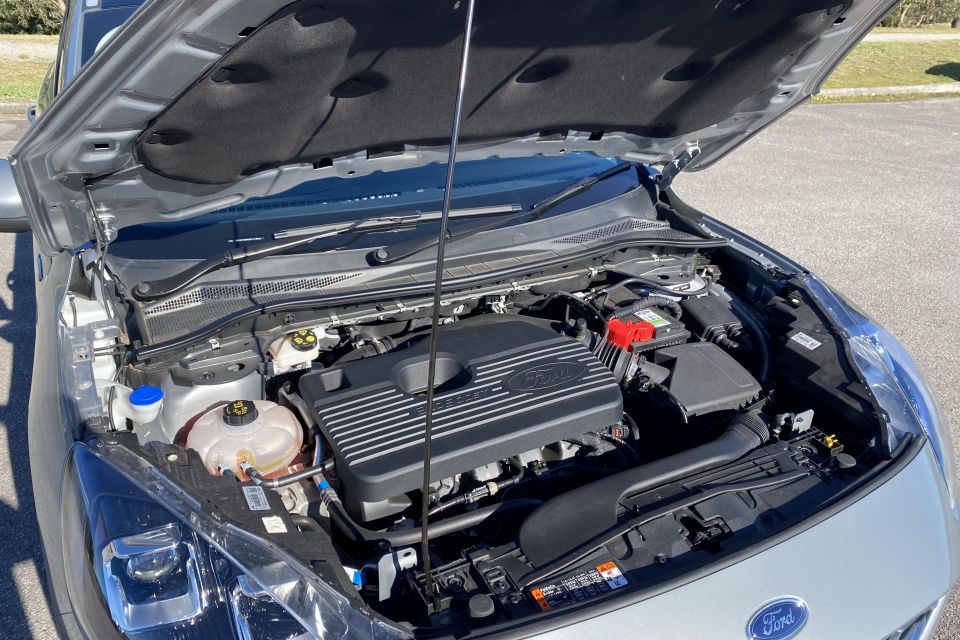
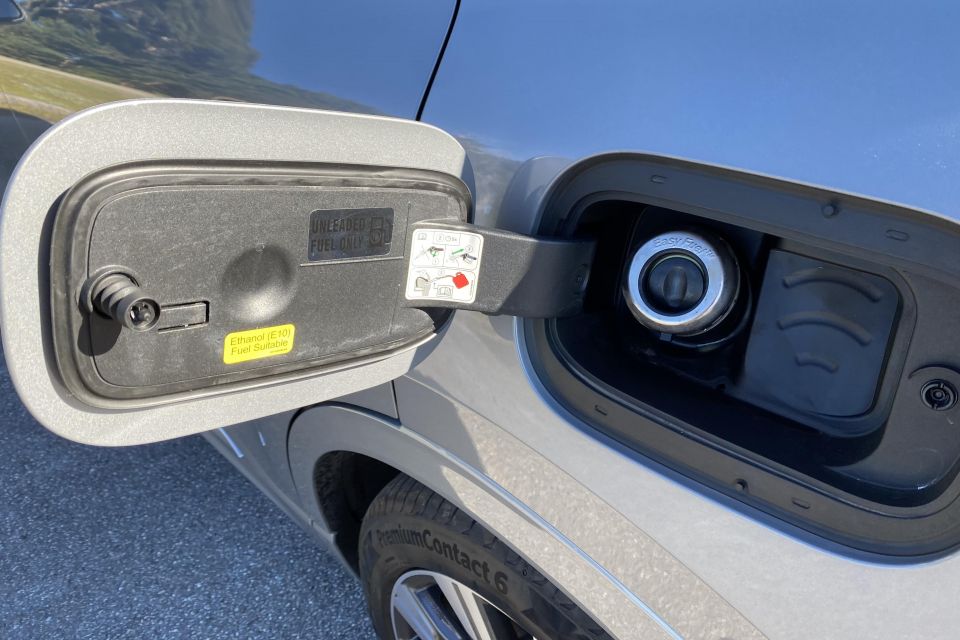

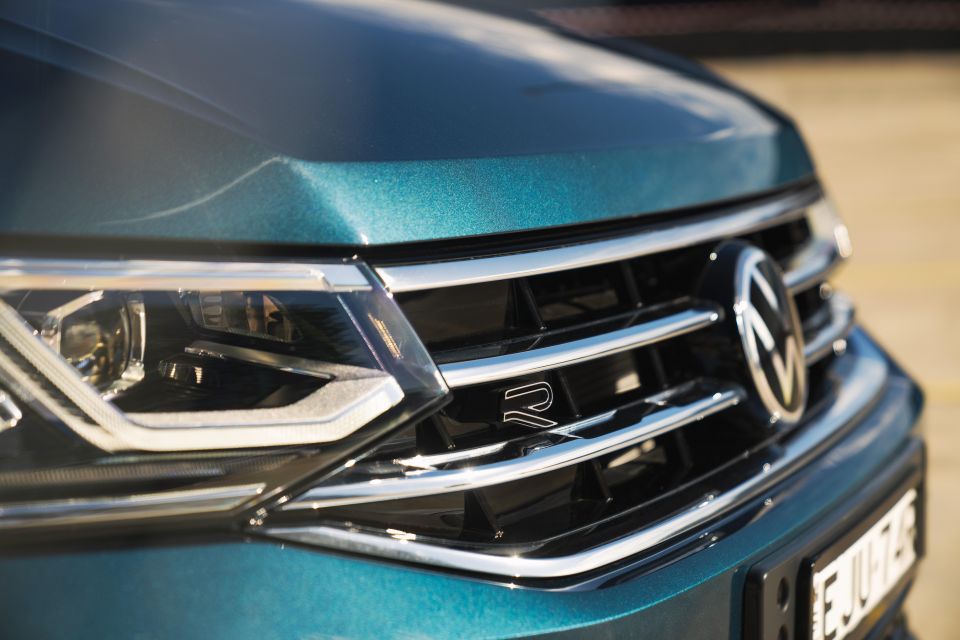
Where expert car reviews meet expert car buying – CarExpert gives you trusted advice, personalised service and real savings on your next new car.
In a market segment dominated by bland asthmatic boxes, this pair stand out.
The Ford’s 2.0-litre turbocharged petrol delivers 183kW of power and 387Nm of torque via an eight-speed automatic to either the front wheels, or an on-demand AWD system.
It uses 8.6 litres of fuel per 100km.
By contrast the Volkswagen Tiguan’s Golf GTI-derived 2.0-litre turbo petrol makes 162kW and 350Nm, sent to a standard variable AWD system with a front axle bias through a seven-speed DSG dual-clutch auto.
Volkswagen claims fuel use of 8.5L/100km.
| Ford Escape Vignale | VW Tiguan R-Line | |
|---|---|---|
| Fuel type | Petrol | Petrol |
| Displacement | 2.0-litre | 2.0-litre |
| Induction | Turbocharged | Turbocharged |
| Power | 183kW @ 5700rpm | 162kW @ 4500rpm |
| Torque | 387Nm @ 3100rpm | 350Nm @ 1500rpm |
| Transmission | 8-speed auto | 7-speed DSG |
| Driven wheels | FWD or AWD | AWD |
| Fuel use | 8.6L/100km | 8.5L/100km |
| Towing capacity | 1800kg | 2500kg |
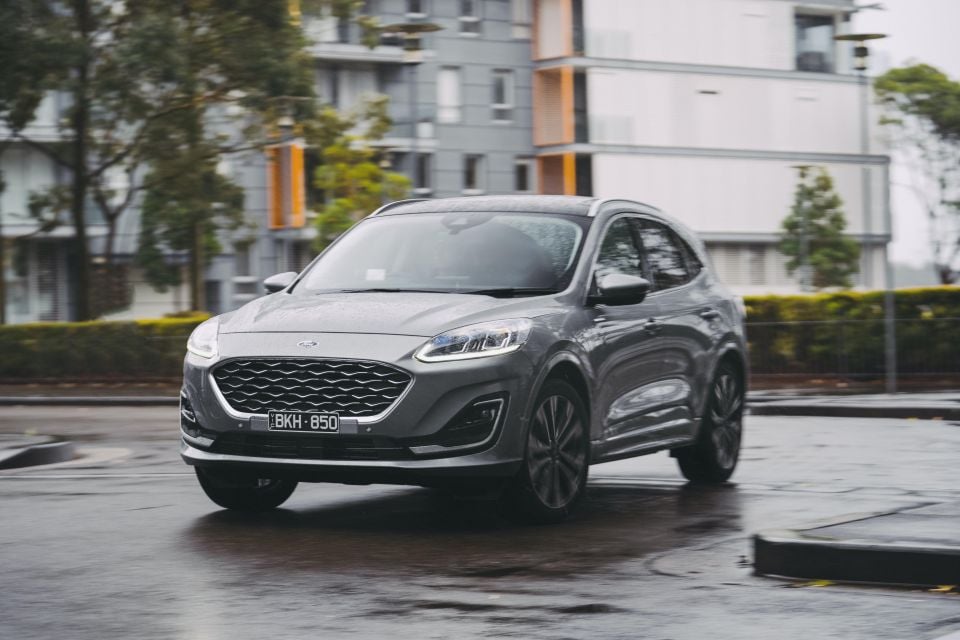
Ford
The Ford promises hot hatch performance in a straight line and it delivers, nudging below seven seconds in the dash to 100km/h.
Its extra 21kW and 37Nm over the Tiguan, and slightly reduced tare mass, stand it in good stead here.
In a segment awash with asthmatic naturally-aspirated engines and droning CVTs, it’s a most welcome thing to have effortless rolling response for overtaking and ample pull up hills.
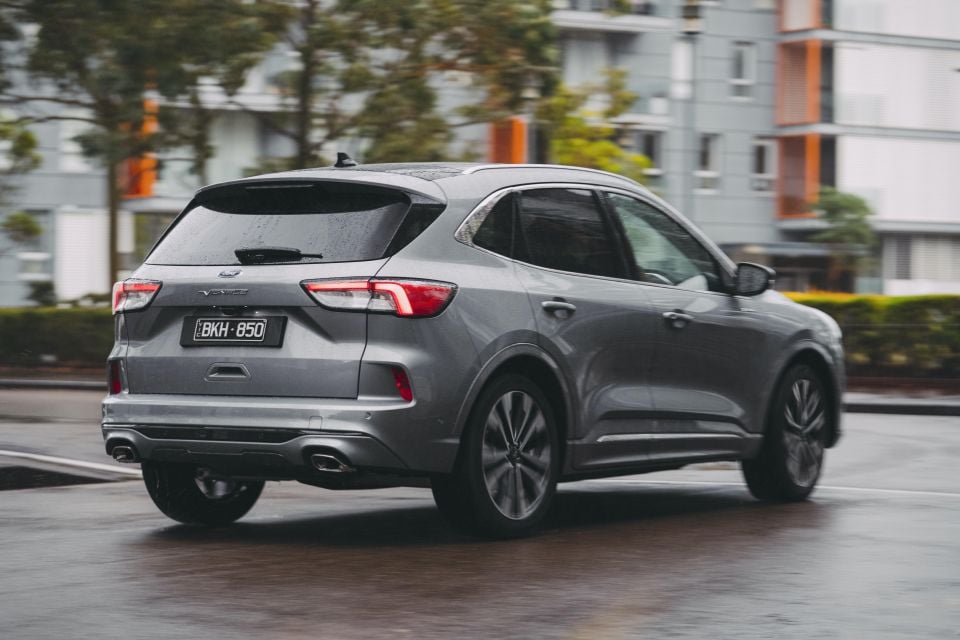
The front-wheel drive versions elicit some wheel spin though, and a little bit of steering wheel tug in the absence of a busy limited-slip differential. Pay the extra few grand for the reactive on-demand all-wheel drive, weight penalty and all.
The rotary dial to control the transmission isn’t all that intuitive really, but the transmission felt pretty smooth and un-fussed for the most part.
Ford of Europe have some of the best engineers going, but the Escape does have a few dynamic sore points.
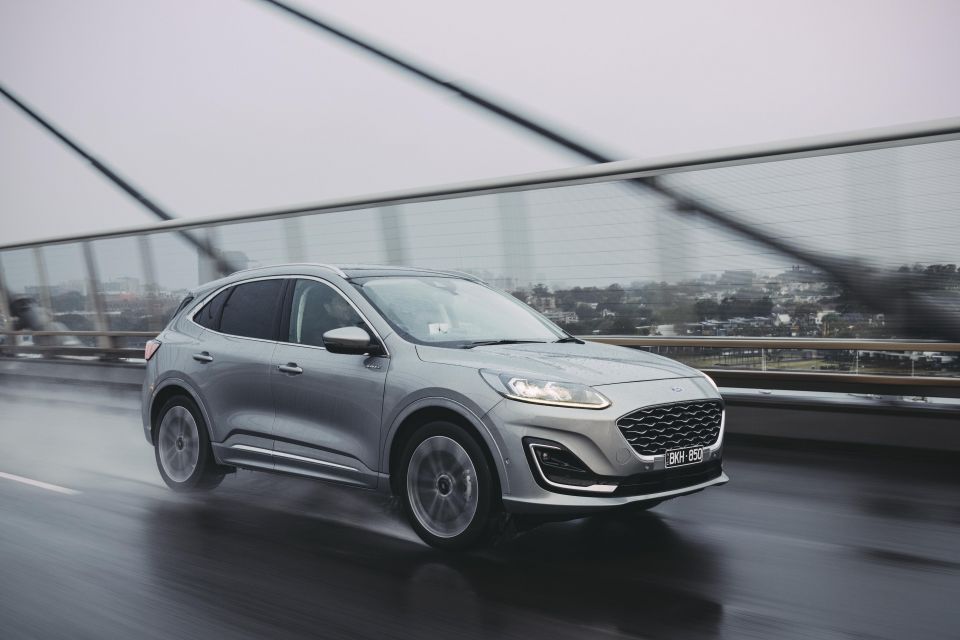
It doesn’t stay quite as level against cornering forces as the Volkswagen, and its noise, vibration and harshness suppression is a smidgen less effective – though the Continental tyres on optional 20-inch wheels here are good rubber.
The electric steering is super light and wieldy, but its quickness and sensitivity from centre doesn’t really feel all that cohesive in a high-riding crossover that has a little lean in corners. The flat and unsupportive seats only reinforce this.
There are some driving modes to play with, including a sports setting that sharps throttle response and slippery low-traction modes that do the opposite.
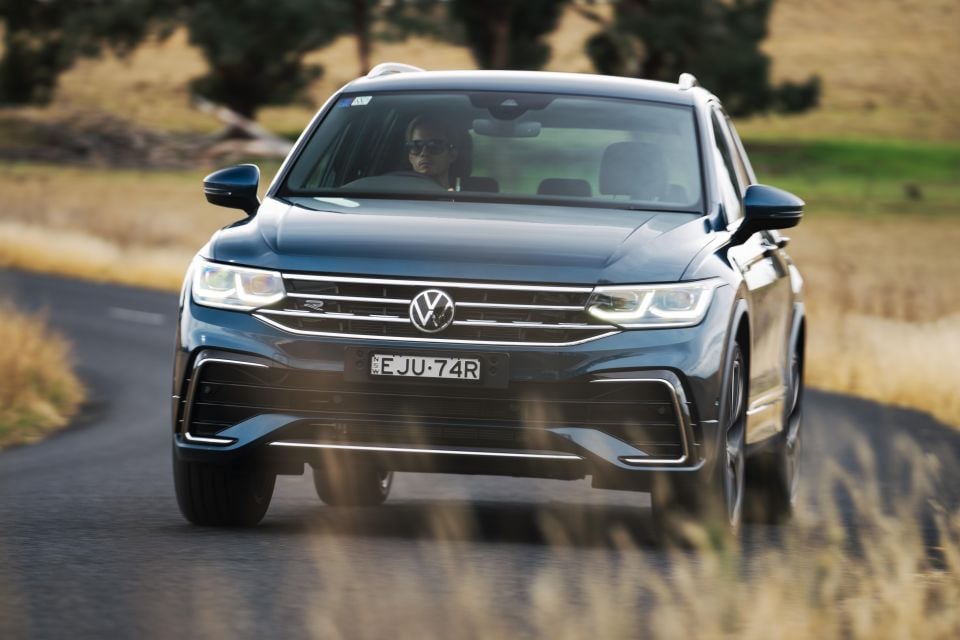
Volkswagen
The Volkswagen’s engine falls short on outputs, but it has a more characterful sound and this iteration of DSG (dual-clutch automatic transmission) is hard to fault, offering smoothness in traffic and rapid slick-shifts at pace.
At an even 7.0 seconds to 100km/h the Tiguan is 0.5sec off the ridiculously rapid Ford, but by the seat of your pants it actually feels the opposite.
You can get a diesel Tiguan in this spec, but the fact the 162TSI makes its peak torque of 350Nm at just 1500rpm makes it feels exceedingly muscular almost immediately.
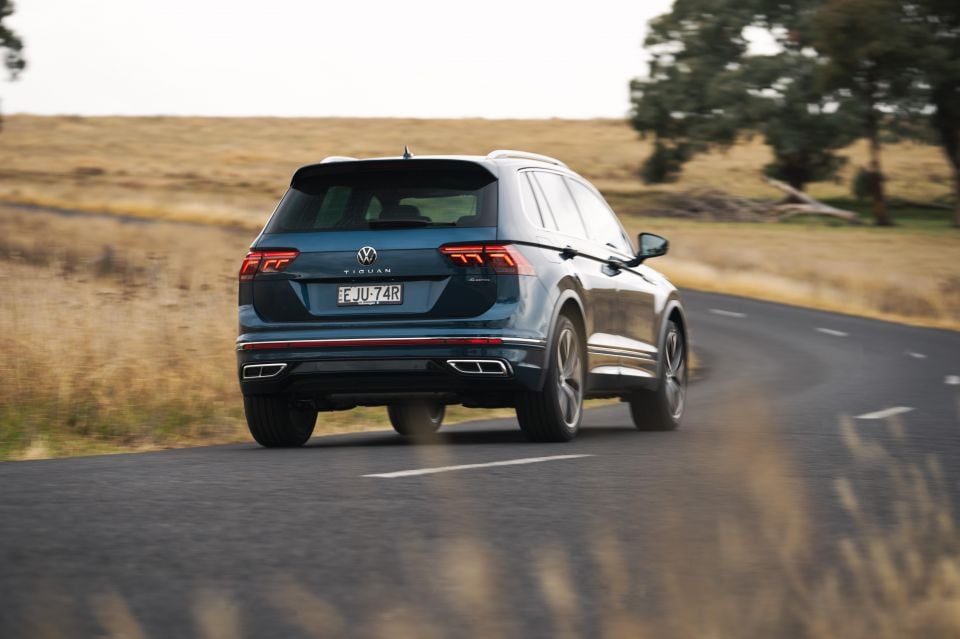
The steering has a firmer feel over the Ford’s and the body feels a little more stable and less fidgety than the edgier Escape, which reflects the Volkswagen’s Autobahn readiness.
The driving position and seats and also more supportive, making the Tiguan a more relaxing vehicle to drive with alacrity. At the same time, put it into Comfort mode and it’s a placid and docile school-run machine.
The standard AWD offers numerous low-grip traction modes that change the throttle and ESP like the Ford, as well as a sports mode that sharpens up response.
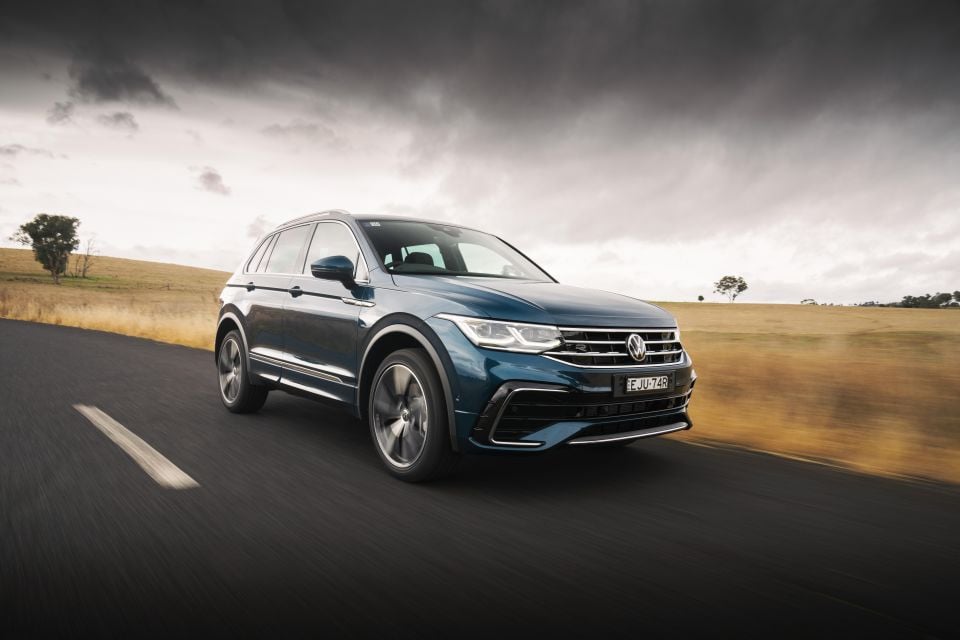
Over and above this it also comes with adaptive chassis control that lets you change the damper parameters.
As such, it offers a more Jekyll/Hyde experience between comfort and dynamism.
It has a sense of heft, solidity and maturity that the Ford doesn’t quite match, this Tiguan, and it’s a smidgen more refined to boot.
| Ford Escape Vignale | VW Tiguan R-Line | |
|---|---|---|
| Weight | 1690kg | 1785kg |
| Front suspension | MacPherson strut | MacPherson strut |
| Rear suspension | Multi-link | Multi-link |
| Dampers | Passive | Active mode-based |
| Steering type | Electro-mechanical | Electro-mechanical |
| Front brakes | Ventilated disc | Ventilated disc |
| Rear brakes | Solid disc | Solid disc |
| Tyres as tested | Conti 245/45 R20 | Pirelli 255/40 R20 |
| Clearance | 190mm | 201mm |
| Turning circle | 11.4 metres | 11.9 metres |
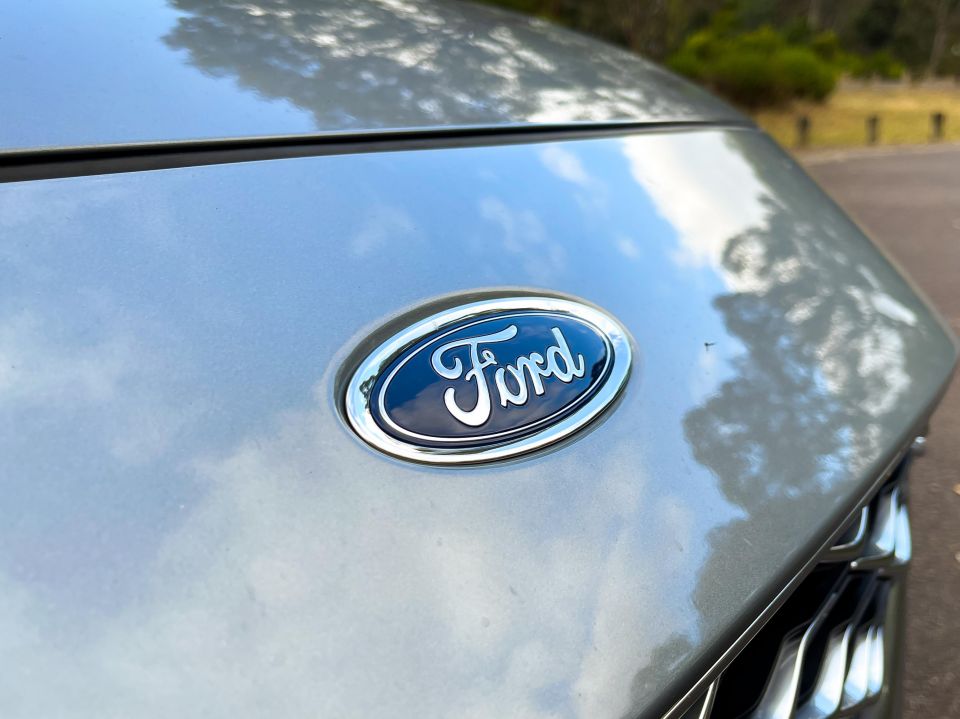

Both vehicles come with five year, unlimited-kilometre warranties.
Ford charges $299 per service for the first four years, at 15,000km or annual intervals (meaning 60,000km and/or four years total).
Volkswagen’s five-year Tiguan ‘Care plan’ covers five years and/or 75,000km of servicing for $2700 at an average cost of $540 per year.
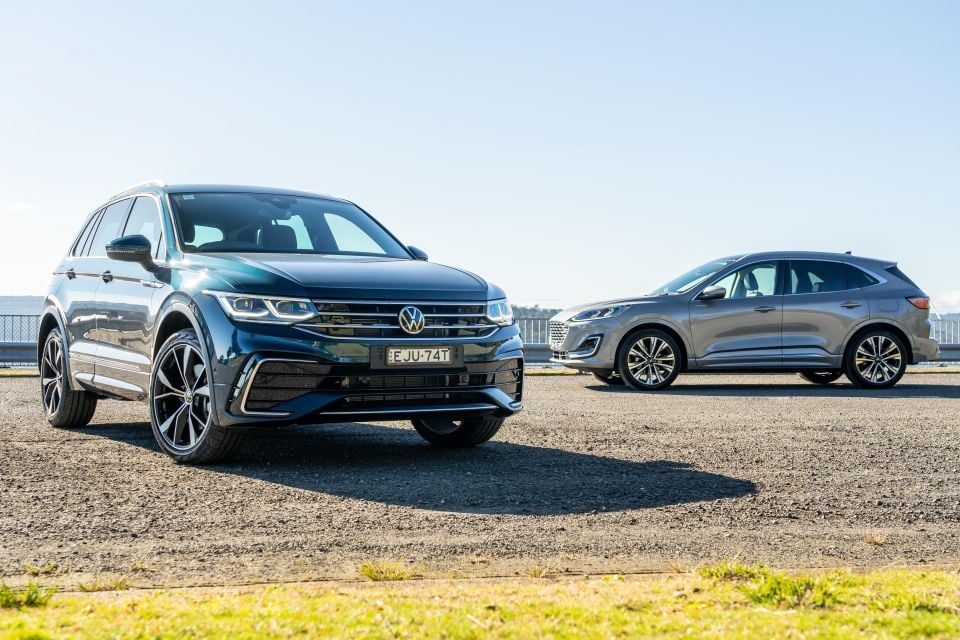
The Ford Escape Vignale certainly deserves more recognition from the market. It looks great, goes like the clappers off the mark, is practical and well-priced, offers all the requisite tech and safety, and is quite reasonable with its service pricing.
However I found the more expensive Volkswagen Tiguan range-topper to offer acceleration that belies the spec sheet, a wider spread of driving modes, and a better-built and smarter interior – frustratingly non-intuitive ventilation and steering wheel controls aside.
The German feels every bit the premium product, and is the one I’d buy. You?
MORE: Everything Ford Escape MORE: Everything Volkswagen Tiguan
Share your thoughts with us in the comments below!
Share your thoughts and write a review of a car you own and get featured on CarExpert.


Max Davies
4 Hours Ago


Damion Smy
12 Hours Ago
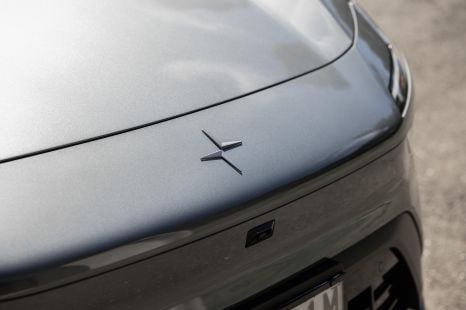

Damion Smy
13 Hours Ago


Damion Smy
15 Hours Ago


Damion Smy
17 Hours Ago


CarExpert.com.au
18 Hours Ago